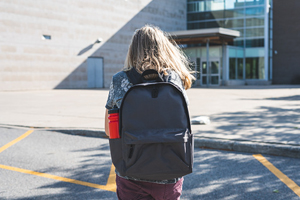
Right now, Fall 2020 feels like a riddle, wrapped in a mystery, inside an enigma. The unpredictability of the pandemic -- and whether students will be willing to return to campus
-- impacts decisions about when and how institutions reopen
(wholly or partly), whether to shift instruction online, or whether to make changes to the academic calendar.
“We’re trying to figure how to we do what’s right for students, faculty, and staff — how can we accomplish our educational mission — while keeping everyone safe?” said Rock McCaskill, Associate Registrar
for Operations, Clemson University. “Our hope, of course, is to get on campus and back in class, if that’s feasible and prudent.”
Guiding principles: Health + pedagogy
As various phases of reopening are achieved, institutions have to take multiple factors into account when making decisions about instructional delivery. Two of the biggest pieces of the puzzle are online/in-person decisions and academic calendar considerations.
Classrooms real and virtual. In most cases, scheduling will be dictated by the pedagogical needs of the class, as well as by class size and classroom size, so that social distance can be maintained as needed and rooms can be cleaned regularly.
A combination of remote and in-person learning may be part of the solution.
“An option we’re considering is rotating students, for example having one third in the class at a time while everyone else is remote, that way everyone gets some face-to-face time,” McCaskill said.
Some institutions may move previously in-person classes online — particularly large lectures that may be well-suited for virtual delivery, potentially freeing up larger spaces to be used for smaller classes so students can spread out. Some institutions
may even go online completely.
No matter what the plans for the fall, however, institutions need to be ready to respond to what has so far been a rapidly changing situation. Any plan made now may well be modified multiple times before the fall.
“We must be prepared to pivot back to all remote if the infection numbers get back to where we were in March,” McCaskill said. “We have to be flexible as we balance all of the various factors.”
Of course, the academic considerations of instructional delivery are only one piece of the returning-to-campus puzzle — transportation, custodial, dining, housing, and more are also part of the conversation, as well as the possibility of on-campus student screening and the deployment of health apps.
Academic calendar: to keep or not to keep? Some institutions, such as Clemson, are striving to maintain their calendar as scheduled while making shifts within that calendar to enhance health and safety.
“We’re looking at options to try to keep our semester dates as planned, if possible," McCaskill said. "For example, one option we're considering is shifting the last two weeks of class to remote learning, so that when students leave at Thanksgiving, they are gone — just to prevent a lot of
coming and going on campus."
Other institutions may delay their start date, start early, or change their delivery model altogether.
Guided by data
During the pandemic pivot, logistical decisions at many institutions were made by the emergency operations group. Once a contingency planning arm in case of natural disasters or emergencies, emergency operations has now become a central hub for
all decisions made related to the virus — which doesn’t seem to be going anywhere any time soon.
At Clemson, like many universities, the Registrar’s office is part of that emergency team.
“This group monitors the data, monitors the numbers, and defines the triggers for when we can begin to move into different phases of operations,” McCaskill said. Triggers are based on local infection rates and case numbers, which may
vary from campus to campus across the state.
Join AACRAO Coffee Break: Instructional Planning for Summer and Fall
McCaskill and professionals from diverse institutions will lead an online conversation around "Instructional Planning for Summer and Fall."
Join the Coffee Break this Friday, May 22 at 2 PM ET to hear what various institutions taking into consideration as they plan. In addition to McCaskill, presenters include: Tim Amyx, Director of
Admissions & College Registrar, Volunteer State Community College; Tara Arneson, Registrar, Champlain College; Rick Sparks, AVP for Learning Systems Innovation and Effectiveness, University Registrar, Virginia Tech; and Dr. Wendy Kilgore, Director
of Research and Managing Consultant, AACRAO.